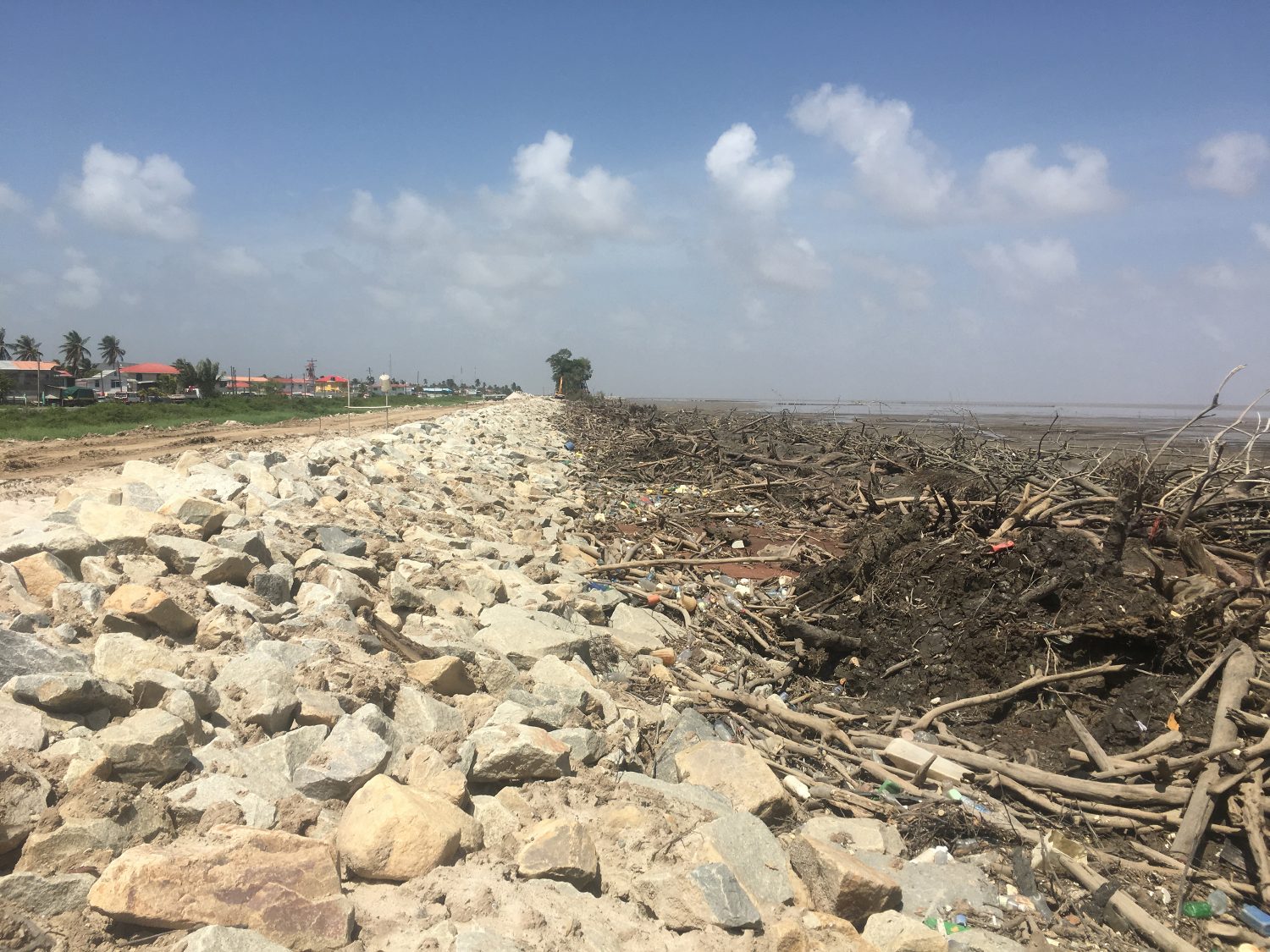Senior Engineer Jermaine Braithwaite from the Ministry of Public Infrastructure (MPI) says that the works to reinforce the Rumzigt, West Coast Demerara shore with rocks was necessary since the mangroves and other vegetation there were progressively dying.
Stabroek News had reported on January 29th that works on the seashore in Ruimzigt had resulted in the destruction of mangroves and other vegetation which residents had said worried them.
However, speaking to this newspaper on the same day that the news item appeared, Braithwaite said that the understanding of the residents is flawed and that MPI has been monitoring the area for years. While it was a healthy mangrove area some 10 years ago, the trees started to die off, which he said is a natural phenomenon.
“It’s a cycle which is very characteristic of the coast. The sediment of the coastline moves westward and some areas we have erosion and some area there is accumulation. When that erosion occurs at any location the plants die progressively. So there was a healthy fringe there many years ago but that started to deplete,” Braithwaite said.
As a result, he said, the Ministry recognized that the embankment would’ve become vulnerable as a result of the “natural depletion” of the mangroves and developed a project to intervene and construct a rock armour revetment.
“The intervention was necessary. We could leave all the plants to die off and the embankment would erode and could possible lead to a flood but this is a proactive approach, recognizing that the area is under threat,” he said, while pointing out that the area is one of the most vulnerable on the West Coast.
According to a Department of Public Information (DPI) release, on January 30th, Chief River and Sea Defence Officer, Kevin Samad also stated that the ongoing works would not jeopardize the residents’ livelihoods.
The statement quoted him as saying that the structure was designed to provide adequate levels of flood protection for a minimum period of 30 years and caters for the rising sea level.
The project is expected to cover some 860 meters of rip-rap work and is currently 65% completed. It doesn’t appear that residents of Rumzigt were notified that the mangrove trees and other vegetation were dying and therefore they would be removed to make way for the rock armour revetment.
Prior to the publication of the January 29th news item, Stabroek News had attempted to elicit a comment from MPI and the Environmental Protection Agency on the mangroves to no avail.
In 2010, new regulations were put in place that prohibited the removal of mangroves and restoration projects across the coastland were subsequently launched. It is unclear if the Guyana Forestry Commission was notified that the mangroves had become vulnerable and were to be removed.





